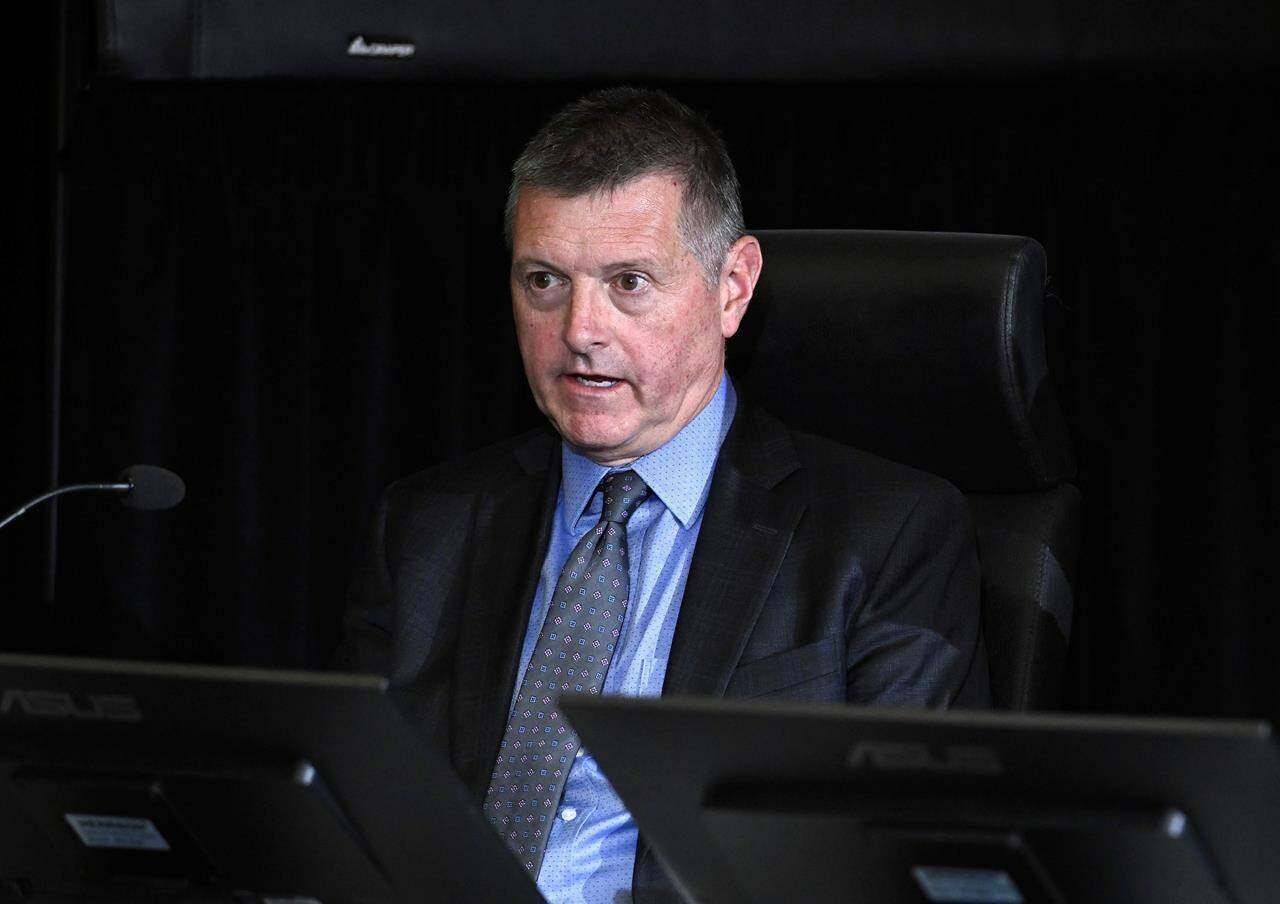Liberal cabinet ministers deemed last winter’s “Freedom Convoy” protests a threat to the security of Canada, despite warnings from the federal intelligence agency that threshold was not met, an inquiry into the Emergencies Act learned Monday.
Prime Minister Justin Trudeau invoked the Emergencies Act on Feb. 14, arguing its temporary and extraordinary powers were needed to end blockades in Ottawa and at border crossings.
The Public Order Emergency Commission, which is holding hearings in Ottawa until Nov. 25, is tasked with determining whether the government was justified in triggering the legislation.
The legislation says a public order emergency is one that comes from a “serious threat to the security of Canada, as defined by the Canadian Security Intelligence Service Act.”
The definition includes espionage or sabotage of Canada’s interests, foreign-influenced activities, or the violent overthrow of the government.
A document summarizing the evidence from David Vigneault, director of CSIS, shows he believed the protest “at no time” posed a threat to Canada’s security and that there were no signs of foreign interference.
“He felt an obligation to clearly convey the service’s position that there did not exist a threat to the security of Canada as defined by the service’s legal mandate,” said the document released on Monday through the public inquiry.
CSIS was, however, monitoring subjects of intelligence investigations who were taking part in the protests.
Vigneault, who is expected to testify before the commission next week, advised cabinet that invoking the Emergencies Act could further inflame extreme anti-government rhetoric.
Rob Stewart, who was deputy minister of public safety at the time of the protests, told the commission on Monday that the government would have a more broad interpretation of what constitutes a national security threat.
He said that ultimately, the decision was up to cabinet.
“The cabinet is making that decision and their interpretation of the law is what governs here,” Stewart told the commission. “And their decision was evidently that the threshold was met.”
Brendan Miller, a lawyer for the Ottawa “Freedom Convoy” protesters, told the commission no federal agency advised cabinet that the protest posed a national threat, as defined in the legislation.
“You have the RCMP, you have CSIS, you have the entire intelligence apparatus in the federal government and none of them said that this threshold was met, did they?” Miller asked Stewart during cross-examination Monday.
“They weren’t asked,” Stewart said.
In a letter to premiers on Feb. 15, the day after he declared a public order emergency, Trudeau said the federal government believed the situation reached a point “where there is a national emergency arising from threats to Canada’s security.”
“We are facing significant economic disruptions, with the breakdown of supply chains. This is costing Canadians their jobs and undermining our economic and national security, with potentially significant impacts on the health and safety of Canadians. It is affecting Canada’s reputation internationally, hurting trade and commerce, and undermining confidence and trust in our institutions,” he wrote to the premiers.
The testimony Monday provided the commission with its first look behind the curtain at cabinet discussions in the lead up to the invocation of the Emergencies Act. This year was the first time the act had been used since it replaced the War Measures Act in 1988.
As early as Feb. 7, then-president of the Canada Border Services Agency John Ossowski suggested to a call of federal, provincial and territorial officials that the Emergencies Act could be used to compel tow truck drivers to help remove large rigs, documents tabled with the commission shows.
On Feb. 10, the idea of invoking the act was formally discussed by cabinet. A summary of an emergency cabinet committee struck by the prime minister that day says Trudeau raised the notion of two tracks forward: actions that could be undertaken under existing authorities, and the process of invoking the Emergencies Act.
Most of the details from the ensuing discussion have been blacked out.
Laura Osman and Jim Bronskill, The Canadian Press

